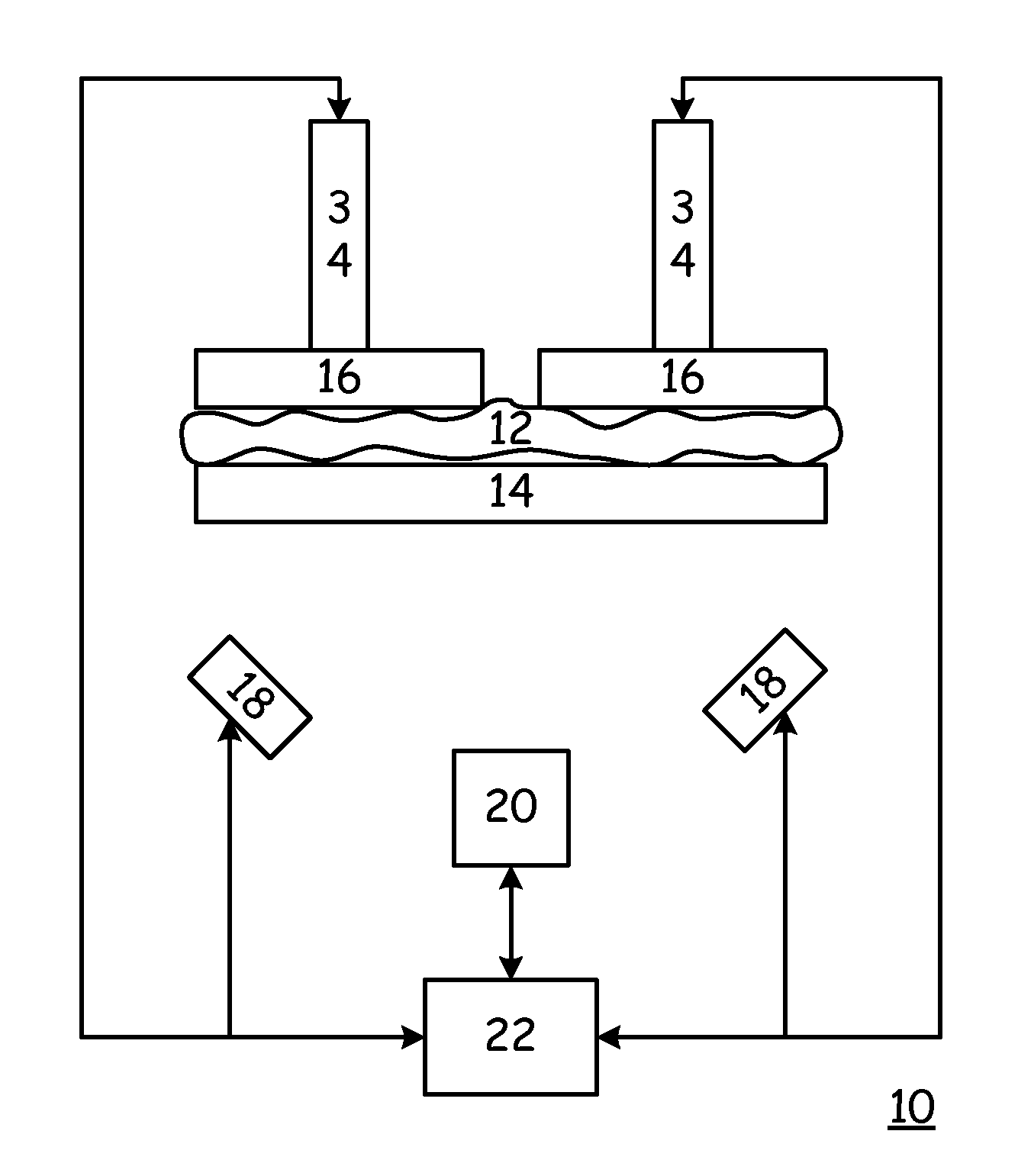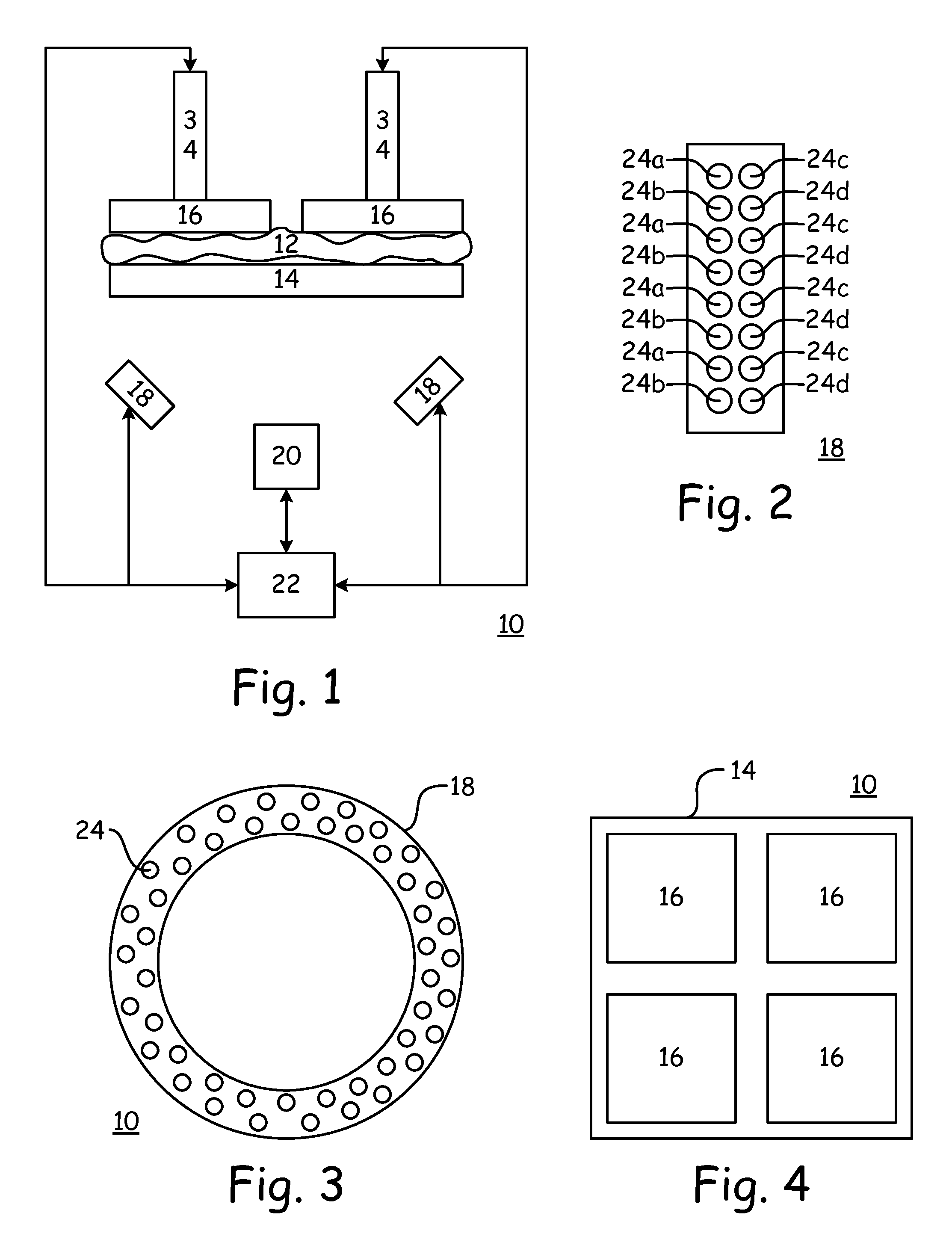Fiber Property Measurement
- Summary
- Abstract
- Description
- Claims
- Application Information
AI Technical Summary
Benefits of technology
Problems solved by technology
Method used
Image
Examples
Embodiment Construction
[0016]With reference now to the figures, there are described various embodiments of a fiber instrument. FIG. 1 depicts a function block diagram of a fiber instrument 10 according to an embodiment of the present invention, which is operable for taking measurements on a fiber sample 12, such as an amount of cotton. The basic elements of the fiber instrument 10 are a surface 14 on which the fiber sample 12 is disposed, at least one hand 16 that presses the fiber sample 12 against the surface 14, at least one compressor 34 that pushes the hands 16 against the fiber sample 12, at least one illumination source 18 that illuminates the fiber sample 12 from beneath the surface 14, at least one sensor 20 that captures measurements of the fiber sample 12, and a controller 22 in communication with the various elements of the fiber instrument 10, which controller 22 is operable to send commands to and receive information from the various elements, so as to control the fiber instrument 10 in a de...
PUM
 Login to View More
Login to View More Abstract
Description
Claims
Application Information
 Login to View More
Login to View More - R&D
- Intellectual Property
- Life Sciences
- Materials
- Tech Scout
- Unparalleled Data Quality
- Higher Quality Content
- 60% Fewer Hallucinations
Browse by: Latest US Patents, China's latest patents, Technical Efficacy Thesaurus, Application Domain, Technology Topic, Popular Technical Reports.
© 2025 PatSnap. All rights reserved.Legal|Privacy policy|Modern Slavery Act Transparency Statement|Sitemap|About US| Contact US: help@patsnap.com


